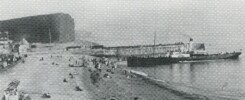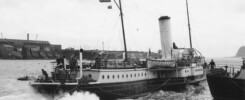
With war about to be declared P & A Campbell cancelled all further Sussex Coast sailings and ordered Brighton Queen, Glen Gower and Waverley to return to the Bristol Channel on Saturday 2nd September 1939.
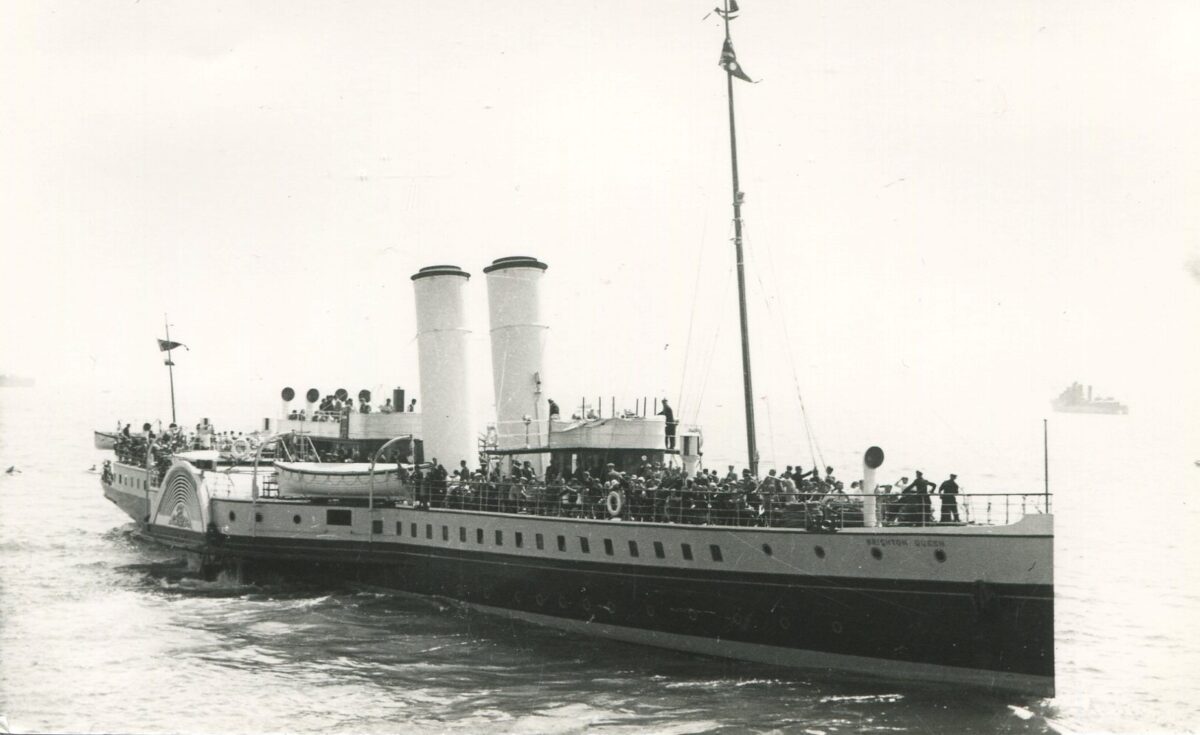
All three set off from Newhaven at 9.30am and proceeded in convoy along the Sussex coast to the Isle of Wight where they were stopped by an examination vessel and told to proceed outside the island rather than through the Solent which was their original intention.
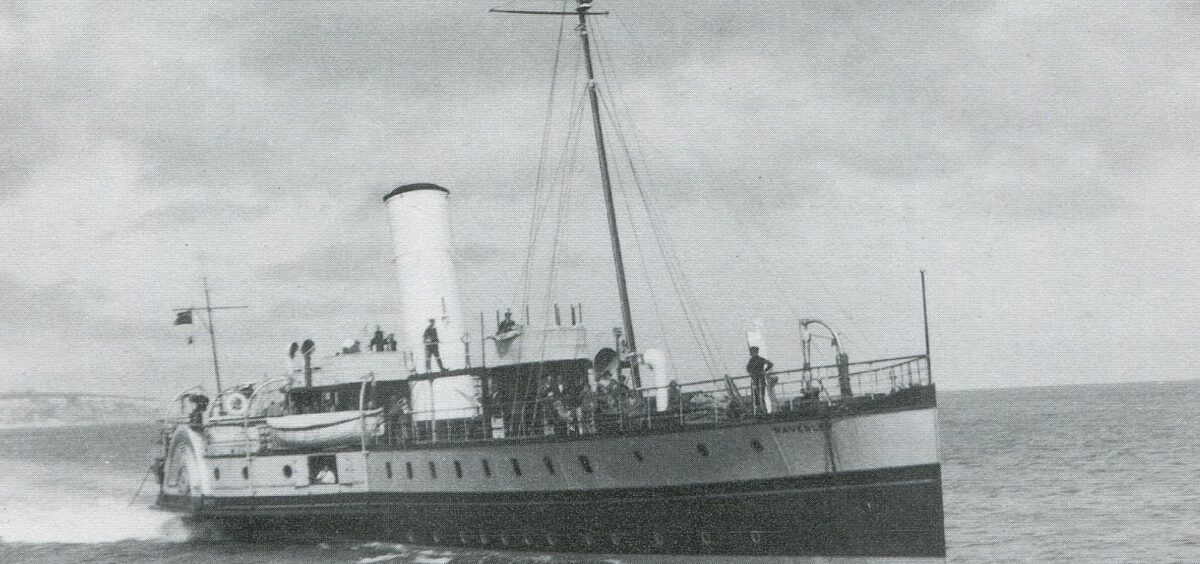
They rounded Land’s End around midnight with Brighton Queen and Waverley arriving at Ilfracombe around 9am the following morning with Glen Gower following up the rear about three nautical miles behind.
War was declared at 11am on Sunday 3rd September and P & A Campbell cancelled the remaining Bristol Channel services for the season with the exception of the Cardiff/Weston ferry which was advertised to continue offering two round trips every day, except Fridays 8th & 29th and Tuesday 19th September, up to Saturday 30th September. In the end this too was pulled from 17th September.
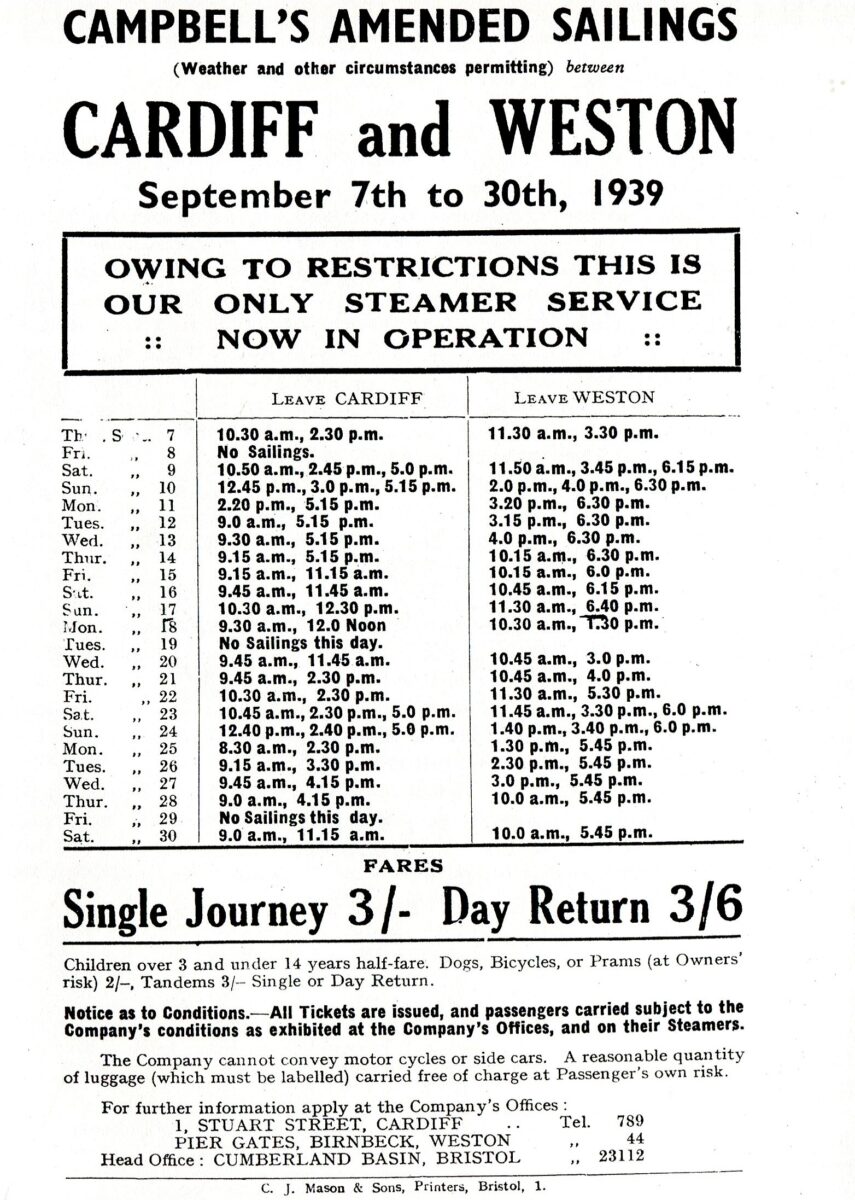
Ravenswood resumed a limited service on 11th May 1940 but there were few takers. This too was pulled from 3rd July and that was that for paddle steamer services on the Bristol Channel and the Sussex Coast until after the Second World War.
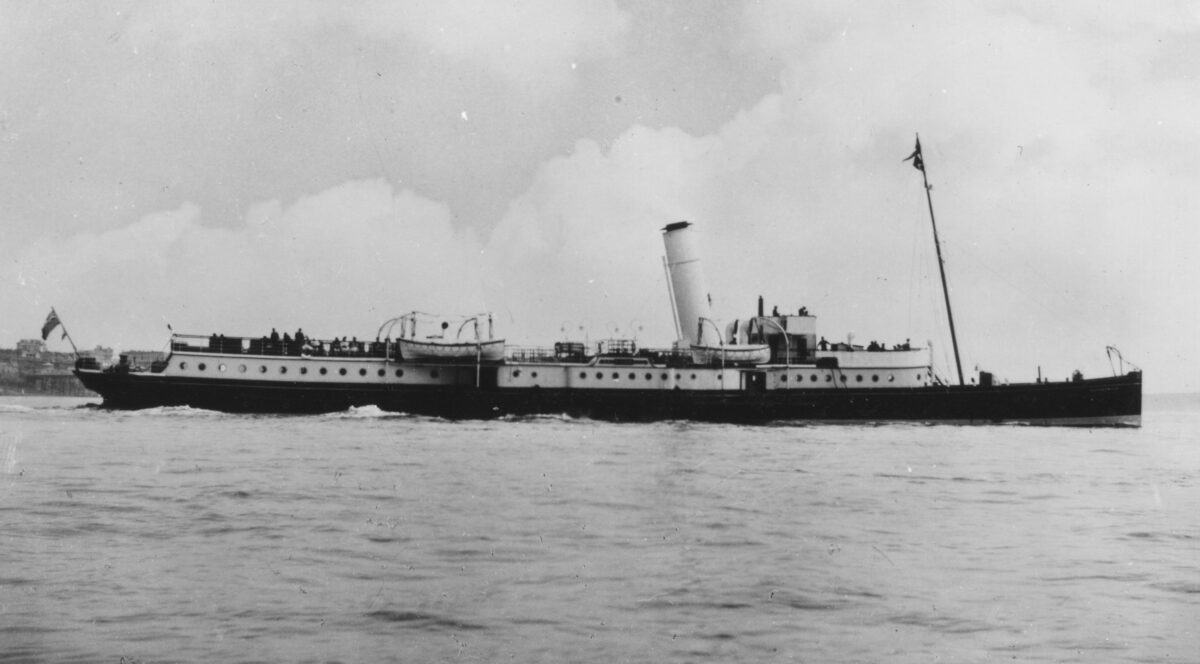
Trips were resumed on the Bristol Channel on Saturday 13th April 1946 when Ravenswood ran a late afternoon cruise from Bristol to off Clevedon.
It was not until the following year, 1947, that any of the steamers returned to the Sussex Coast when Glen Gower kicked things off with a day trip from Brighton to Ryde on Wednesday 21st May 1947.
In pre-war years P & A Campbell had usually rostered three paddle steamers for excursions from Brighton, Eastbourne and Hastings each summer and occasionally four. After the war, with the exception of 1948 and 1949 when there were two vessels, Empress Queen and Britannia and 1951 when there were none, they based only one steamer each summer at Newhaven. Such was the decline in trade after the war.
Whilst P & A Campbell’s first Waverley, built in 1885, served in the latter part of the First World War and was scrapped in 1919, their second Waverley ex Barry as described above, was converted into a minesweeper at Milford Haven in 1939 and renamed HMS Snaefell. She survived Dunkirk but was sunk off Sunderland on 5th July 1941.
Brighton Queen also became a minesweeper under her own name and was lost at Dunkirk on 1st June 1940.
Glen Gower became another a minesweeper under the name HMS Glen More. She survived Dunkirk and the rest of the war returning to service for P & A Campbell subsequently on their routes on the Sussex Coast and Bristol Channel until 1957.
Kingswear Castle returned to service in 2023 after the first part of a major rebuild which is designed to set her up for the next 25 years running on the River Dart. The Paddle Steamer Kingswear Castle Trust is now fund raising for the second phase of the rebuild. You can read more about the rebuilds and how you can help if you can here.
John Megoran
This article was first published on 2nd September 2020.

